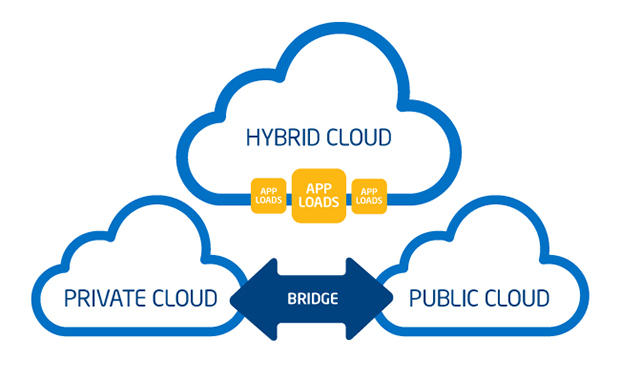
If you’re running a business that isn’t using cloud tech already then you’ve got a lot of catching up to do! These days, pretty much every business not only uses the cloud, most of them are completely reliant on it. If you’re not reaping all the benefits of cloud computing, then you’re essentially bolstering the profit margins of your competitors. While a functional cloud infrastructure can mean great things for your business, making the transition can take a lot of work, and will be fraught with difficulties if you don’t go about it the right way. Here are some of my best tips for making sure the change goes as smoothly as possible.
Use A Corporate Risk Board
We all know about how cloud technology can be applied to benefit an organization. However, no major change can take place in a business without a certain amount of risk. By engaging a corporate risk board, you can take control of this risk as much as possible according to your circumstances. The corporate risk board you assemble for your transition to the cloud should include seasoned IT and financial professionals who understand all the risks and benefits tied to switching over to the cloud. They’ll be able to suggest strategies for mitigating the existing risks, and then communicate their plans to you and the other higher-ups at your business to bolster support for the changes that need to happen. Many people consider corporate risk boards to be an unnecessary expense when dealing with these kinds of transitions, but you’ll find it easier to steer around various pitfalls when you run your cloud transition past one.

Study: Cyber risks overshadow corporate board security confidence
Prepare Your Employees
Whenever a business undergoes such a significant and far-reaching change, there’s going to be employees who find it hard to hit the ground running, and adapt to the new way of doing things. This, as you can imagine, can lead to all kinds of problems and hindrances, that you’re going to need to prepare for if you want the transition to go as smoothly as possible. You should organize some training modules that help ramp up every employee, so that everyone has a good idea of what the transition will mean once it’s up and running. You also need to make sure that your employees are aware of all the risks and issues they may face when the cloud lands at your company. Data encryption is something that needs to be covered. No matter how careful everyone is, there’s always a risk of laptops, smartphones, and other mobile devices getting lost or stolen. To mitigate this risk, you need to ensure that all the sensitive data that’s stored on these devices is protected through data encryption. This is just one of the good security practices that need to become part of the everyday operations at your business after the transition. You should also make sure that your staff are prepared for the reduced privileges they’ll have once you’ve started using the cloud. If you’ve been presenting yourself as a fun, carefree boss for some time, then this is something that may be about to change! Pre-cloud, it was almost a given that employees could only access important company files from office computers. Once you start using the cloud, they’ll be able to do it from pretty much everywhere. This obviously poses a major security risk. Your employees may find it easier to work from home, but anyone who happens upon the device can also manipulate your files. To mitigate this risk, you’re going to have to reduce employee privileges, so make sure these don’t come as a shock to anyone.

The developer’s checklist to prepare for the cloud
Consider a Hybrid Approach
It’s a common misconception that when a business transitions to the cloud, it has to be all or nothing. Either every little process that involves company data has to be linked to the cloud, or the new tech won’t work at all. This certainly isn’t the case! Countless businesses use the cloud in a hybrid model, where cloud services are used in conjunction with normal, on-site storage solutions. This will give you all the major benefits that comes with the cloud, while still retaining a certain level of control over the data which you don’t want on remote servers. If you’re still hesitant about the idea of going all-out on the cloud, then a hybrid approach could be a great idea. You’ll be able to move your business onto the cloud piece by piece, test the waters, and figure out how much remote storage can really do for your business. My only warning here is not to take too long about it. You may be more comfortable with a hybrid model, but this has been known to hold some companies back from maximizing the huge potential of the cloud. If you want to learn how to swim, you have to jump in the water at some point!

Hybrid cloud: What it is, why it matters
Understand and Monitor Maintenance Times
When you’re working with a conventional, on-site IT infrastructure, maintenance is often scheduled for times that will have no kind of dramatic effect on your business operations. If the planned time doesn’t work out for something you wanted to do, you just needed to call someone up and change some things around. When you’ve made the transition to the cloud though, maintenance isn’t always quite as convenient or flexible! All good cloud providers will tell you about scheduled maintenance long before it occurs. To make sure nothing important gets held up, you need to keep logs of these downtimes, then communicate them to your employees so that they can retrieve files and focus on tasks that don’t need cloud information. There’s likely to be a little confusion, and one or two hold-ups when you’ve first made the change. However, you can mitigate these by keeping your frequently used files on site through a hybrid model.

Cloud Cover: Enterprises Are Leveraging Managed Server Hosting and Hybrid Clouds to Ensure Earth-Bound, Rock-Solid Availability of Their Business Applications
If the idea of transitioning your business to the cloud is still feeling a little overwhelming, try to keep your head! Make plans to take these steps, and you’ll make the whole process so much easier.





It is good news about cloud computing for business. Thanks for sharing information.